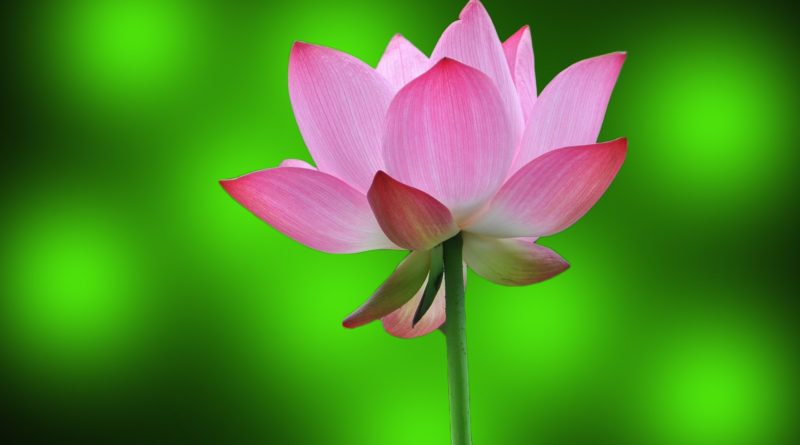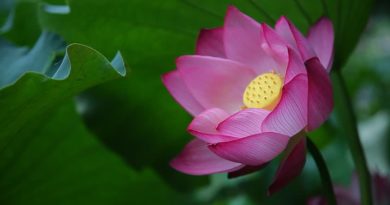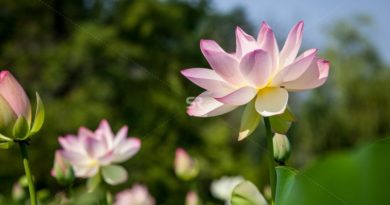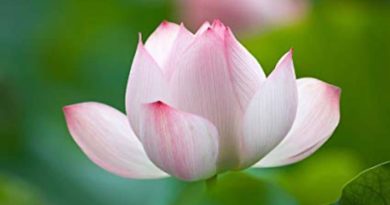Thoughts On The Dhamma – Insight Meditation
MAIN CONTENT
- 7. Insight Meditation
- Insight Knowledge
- A Flash of Lightning
- No Ordinary Teaching
- The Qualities for Success
- The Three Feelings in Vipassana
- Intrinsic Knowledge
- The Knower and the Known
- Empirical Knowledge
- Conviction in Anicca
- The Law of Impermanence
- Ego-Belief
- Self-Discovery
- The Path Factors in Vipassana
- Mindful Perception Leads to Detachment
- The Unseen and the Seen
- Warning
- Eliminating the Unwanted
- Penetrative Insight
- Notes
7. Insight Meditation
Insight Knowledge
Insight knowledge (vipassana ñana) is attained by observing the actions of mind-and-body (nama-rupa) in the state of impermanence (anicca), suffering (dukkha), and no-self (anatta). It is not attained simply by casual observation but by in-depth observation of the actions as they are happening, without leaving any one of them unobserved. Thus the observation should be on all actions such as seeing, hearing, smelling, eating, etc., as they are happening and without failing to observe any single action.
— Discourse on the Hemavata Sutta —
A Flash of Lightning
Watch a flash of lightning. If you watch it at the moment lightning strikes, you will see it for yourself. If you are imagining in your mind as to how lightning strikes before or after the event, you may not be regarded as having seen the flash of lightning. So try to know things for yourself by actual observation of things as they happen.
— Discourse on To Nibbana via the Noble Eightfold Path —
No Ordinary Teaching
Beware of those who assert that Vipassana (insight-meditation) is unnecessary or superfluous. Such statements are not conducive to the practice of insight-meditation, without which our Buddhasasana would be like any ordinary teaching.
— Discourse on To Nibbana via the Noble Eightfold Path —
The Qualities for Success
It is impossible to do anything without faith or conviction. You will practice mindfulness only if you believe that it will help to develop insight-knowledge. But faith in itself will not do. You need, too, a strong will and unrelenting effort to attain the path and Nibbana. Possession of these qualities is essential to success in the practice of mindfulness and for gaining security in the abode of the Noble.
— Discourse on the Ariyavasa Sutta —
The Three Feelings in Vipassana
The main object of Vipassana practice is to seek and cultivate the equanimity that is bound up with “equanimity about formations” (sankharupekkha) insight. To this end we should avoid sensuous joy and seek wholesome joy in good deeds and contemplation. Likewise we should welcome wholesome sorrow stemming from frustration on the holy path and avoid unwholesome sorrow. In the same way we should avoid unwholesome equanimity of the sensual world and seek wholesome equanimity of the holy path.
We should concentrate on wholesome joy, wholesome sorrow, and wholesome equanimity. For the cultivation of these wholesome states of consciousness means the elimination of their negative, unwholesome counterparts.
We should also eliminate wholesome sorrow through wholesome joy. This means that if we are depressed because of the failure to make much progress on the holy path, we must overcome the depression by exerting effort for Vipassana-insight. Likewise, wholesome joy must be rejected through wholesome equanimity.
Thus “equanimity about formations” (sankharupekkha) insight with joy or with equanimity is only a step removed from the holy path and fruition.
— Discourse on the Sakkapañha Sutta —
Intrinsic Knowledge
Here we are not concerned with mere perception but with insight-knowledge which can be gained only through actual practice. When you personally watch people going through a gate, you will notice for yourself their goings and comings; you need not depend on others to know at second-hand that they are going in and out of the gate. In the same way if you yourself watch and note the six sense-doors, the eye-door, the ear-door, etc., you will actually see how nama and rupa arise and pass away without resorting to the process of reflecting.
Take another example. Place a mirror at the roadside. All pedestrians and vehicles will be reflected in the mirror in their true nature. If you watch and note them, you will see them as they really are. In the same way if you watch and note with mindfulness all that appears at the six sense-doors, you will notice the sense-objects (which have no consciousness) arising while the mind (the subject that possesses the consciousness) is taking cognizance of such arising. Then both the object and the subject pass away. Then this process is renewed. The meditator will then come to realize that this is the phenomenon of nama and rupa arising and passing away. Consciousness and corporeality are, after all, not everlasting. They are not permanent. They are suffering. They are unsubstantial.
When you note the working of nama and rupa, you will come to know their true nature. Having known their true nature, what remains there to be thought of and considered? So one does not get at the nature of things by merely thinking about nama and rupa, without actually noting how they arise and pass away. Having come face to face with them, are you going to argue their existence? And it does not stand to reason if one merely recites, “Arising! Passing away!” without actually noting the actual process. The knowledge acquired by this method of thinking or reciting is not intrinsic but mere second-hand knowledge gained through books.
The essence of insight-meditation, therefore, is to note personally all dhammas and phenomena as they occur.
— Discourse on the Bhara Sutta —
The Knower and the Known
When a Vipassana meditator’s insight-meditation becomes strengthened, Right Thoughts direct his mind to realities of the sense-objects on which he concentrates; eventually he will get Right Views. All this happens in this way. As one begins to reach the stage of mindfulness and subsequently of purity of mind, one will be able to distinguish the knowing mind from the object known. For instance, when one is meditating on the rising and falling of the abdominal wall, one may be able to distinguish the phenomenon of rising and falling from the mind that knows it. In much the same way, in the process of walking, one may notice that the act of raising the foot, extending forward, and putting it down is different from the mind motivating the movement. In this way nama, the knower, can be distinguished from rupa, the known. This can be effected without any preconception. One recognizes the phenomena without giving any thought to them. In other words, recognition is spontaneous.
As the power of concentration of the meditator gains strength, and his wisdom gets sharpened thereby, he will come to realize the fact that his knees bend because he wishes them to bent. He walks because he wants to. He sees because he has eyes to see, and the object to be seen is there. He hears because he has ears to hear, and the object to be heard is there. He enjoys life because his kamma is favorable. In this way he is enabled to distinguish between cause and effect with reference to every phenomenon that takes place.
— Discourse on To Nibbana via the Noble Eightfold Path —
Empirical Knowledge
Our main object is to attain insight-knowledge, which is accessible only to empirical approach. Through experience, the meditator observes the distinction between mind and matter, and he realizes the impermanence of every thing. Experience may be followed by explanation on the part of the teacher, but not the other way around. For real knowledge has nothing to do with preconceived notions but is based on personal experience. The empirical knowledge acquired by the meditator is distinct and clear. In the course of his practice he comes to see nothing except the vanishing of everything. This is called bhanga-ñana, knowledge of dissolution, which he learns to understand not from scriptures nor a teacher, but from experience. As he keeps on meditating, he becomes more and more mindful until his mindfulness becomes perfect at the last stage on the Noble Path.
— Discourse on the Ariyavasa Sutta —
Conviction in Anicca
When the realities of nama and rupa are known, the meditator will realize that things come into being only to pass away. Hutva abhavato aniccam the Commentaries say. “Having become, things cease to exist; and that is impermanence.” Only when he can appreciate the realities of this nature of origination and cessation, will he gain conviction as to the impermanence of existence.
— Discourse on To Nibbana via the Noble Eightfold Path —
The Law of Impermanence
Once you are convinced of the law of impermanence, your mind will be detached from the idea of permanence. When you reach that stage, ignorance will be dispelled from your mind. Then you will be able to get away from sankhara, or volitional formations, which constitute kamma that produces rebirth. Now you see a flash of Nibbana.
— Discourse on To Nibbana via the Noble Eightfold Path —
Ego-Belief
Believers in the Dhamma who have acquired some knowledge about the fundamentals relating to nama, rupa, anicca (impermanence), dukkha (unsatisfactoriness), and anatta (egolessness, unsubstantiality), should take up the practice of insight-meditation. It involves noting mind and matter in a state of flux at the six sense-doors in accordance with instructions relating to the establishment of mindfulness, satipatthana. Note what the eyes see; note what ears hear; note what the nose smells; note what the tongue tastes; note what the body contacts; note what the mind thinks; and then you will come to know all that is to be known in accordance with the degree of perfection you have acquired.
As a meditator practices mindfulness, his power of concentration will become strengthened and his mind purified. Then he will be able to distinguish the nama, or the mind that knows, and the rupa, or body that is known. Then he will come to realize the absence of the thing called atta or self, or “I.” Repeating noting will lead him on to the knowledge of the causes and effects of nama and rupa. In the end, the idea of self will be utterly destroyed. Before the practice of mindfulness he might be wondering if a self existed in the past, and is still existing at the present moment, and will exist in the future. After the Vipassana-practice all such doubts will be resolved as the true nature of the phenomena is understood.
As the meditator continues noting, he will find that the sense-objects, together with the consciousness directed at them, vanish. They are all impermanent. They just arise and pass away of their own accord. What is not permanent is not satisfactory. Nothing is substantial. Then, what is there to cling to as “I” or “Mine”? All phenomena are in a state of flux, now arising, now passing away. Contemplating on these matters, one can, by the conviction of one’s own experience, do away with the idea of atta.
Some would like to think that noting merely the arising and passing away of nama or rupa is not enough. They would prefer to speculate at some length on what nama or rupa or the phenomena are. Such speculations are not based on self-acquired knowledge gained through actual practice, but on hearsay or book-knowledge. Insight-knowledge is perceptual and not intellectual.
— Discourse on the Bhara Sutta —
Self-Discovery
The five aggregates of grasping must be learned well. You do not learn them by rote. You learn them by actual experience and practice. You must try to realize yourself the phenomena of arising and passing away of mind (nama) and body (rupa). Vipassana means the insight you gain through your own inquiry and effort. Only after self-discovery as a result of meditation will all doubts about the non-existence of self or ego be dispelled. Then only can it be said with certainty that there is none which can be called an entity, and that what appears to be an entity is, after all, an aggregate of mental and bodily processes. As you become illumined with this realization, you will come to understand the law of cause and effect. As you continue to meditate on this causality, you will encounter the state of flux, or the constant arising and passing away of mind (nama) and body (rupa), which, after all, are not permanent.
— Discourse on To Nibbana via the Noble Eightfold Path —
The Path Factors in Vipassana
A meditator has to note and observe every object that appears to him via the six sense-doors. This he does with an effort; and that is the Right Effort. Then he has to keep his mind on what he has noted so as to be aware of it. And that is the Right Mindfulness. As he has to be mindful, his mind will have to be fixed or concentrated on the object. And that is the Right Concentration. These three constituents of the Path (magga) — Right Effort, Right Mindfulness, and Right Concentration — are grouped under the heading of concentration (samadhi); they are the samadhi magga. Then there is the process of thinking out what existence really is, which is classified as Right Thinking or Right Thought. As a result of this right thinking, we have the Right View. These two are grouped under the heading of wisdom (pañña); they are the pañña magga. All these five in the samadhi and pañña sections are together classified as karaka magga, or the activators, which combine their efforts in the process of simultaneously noting and knowing.
Right Speech, Right Action, and Right Livelihood constitute the section on virtue; they are the sila magga, which may generally be deemed to have been fulfilled before the meditator takes up insight-meditation. During the period of meditation, these three sila magga (path-factors of virtue) remain unpolluted; in fact they get more and more purified as time goes on. With these three in this group added to the five in the previous groups, we have the eight Path factors as appearing in Vipassana (and hence called vipassana magga) on which we are to meditate.
Again, in the development of insight meditation, basic qualities of the elementary Path (mula magga) must be fulfilled. Of them, the first and foremost is the firm conviction that beings are the responsible “owners of their actions” (kammassakata sammaditthi), a view well established in the law of kamma. Only when a meditator has absolute faith in this law of action and its consequences, can he practice Vipassana. He must believe that the result of carrying out Vipassana or meditation exercises can lead him to the Path, to its fruition and finally to Nibbana. It is only with this faith that he will be able to exert Right effort.
— Discourse on To Nibbana via the Noble Eightfold Path —
Mindful Perception Leads to Detachment
“In the seen there should be only the seen; in the heard only the heard; in the sensed only the sensed; in the cognized only the cognized.” This was the Buddha’s instruction to Malunkyaputta and Bahiya.
— Salayatana Samyutta, Sutta 95; Udana I, 10.
One must note what is seen as seen and no more. That is the general idea. For meditational practice, however, one must note the beginning of any object or sense as it is in the process of happening. If one could concentrate on each phenomenon distinctly and separately, one would not feel any attachment or desire, and thus craving (tanha) is gotten rid of.
— Discourse on the Hemavata Sutta —
The Unseen and the Seen
When the Buddha was about to give instructions to Malunkyaputta Bhikkhu, he asked:
“Malunkyaputta, do you have any desire for the appearances that you have never seen, or those that you are not in the act of seeing, or those that you never expect to see?”
“No, sir, that is impossible,” replied the bhikkhu.
— Salayatana Samyutta, No. 95
Now if I were to ask you the same question as the Buddha put to Malunkyaputta Bhikkhu, you would give the same answer as he did. You would not have any feeling of love or hatred for a person whom you never expect to see, would you? Now there are many such people in so many villages, towns, cities, and countries, and you would never have any feeling of love or of hatred for them. You wouldn’t have any attachment desire or lust for them.
Defilements do not arise from the unperceived. This point should be noted.
As for the things seen, however, defilements arise both in the act of seeing and after having seen because a mental picture is retained in the memory and on reflection or recall, defilements would recur. These cherished memories are stored up in the archives of the latent tendencies (anusaya), as deeply rooted memories. It is necessary to root these out by means of Vipassana.
— Discourse on the Hemavata Sutta —
Warning
When the knowledge of investigating the aggregates as composite, and thus as unsubstantial, works, the meditator becomes fully convinced of the truth of the Dhamma relating to the three marks of anicca, dukkha, and anatta, on the contemplation of which he can further follow the trend of knowledge about the arising and passing away of nama and rupa. This is the stage when he attains udayabbaya ñana, the knowledge of arising and passing away. At this stage he will see a radiance in his mind. He will feel highly exultant. His awareness will be extraordinary. There will be nothing of which he fails to take notice. His mind is sharpened, and his memory becomes clear. Strong faith will be established. He will be joyous both physically and spiritually. This state surpasses description. But, if at this stage one becomes attached to such pleasurable mental states, they will become precursors to defilements of the mind, and be obstacles to further mental development. Joy, in a way, is no doubt a support to the meditator in his efforts to gain more strength and determination to strive further for higher goals until he reaches his destination, namely, mature Vipassana-knowledge. So he is warned just to note the mental state of joy as it occurs, and then to dismiss it altogether to gain insight.
— Discourse on To Nibbana via the Noble Eightfold Path —
Eliminating the Unwanted
Every moment of mindfulness means the gradual destruction of latent defilements. It is somewhat like cutting away a piece of wood with a small axe, every stroke helping to get rid of the unwanted fragments of wood.
— Discourse on the Ariyavasa Sutta —
Penetrative Insight
Nama and rupa, or the truth of suffering, is seen as impermanent, as suffering, or as non-self. Every time they are seen thus, there is no chance for craving to make their appearance. Thus there is liberation from craving and clinging. It is called knowing the Truth of Origination by abandonment (pahanabhisamaya), though not by realization.
Every time rupa and nama become subjected to his awareness, the meditator is free from ignorance (avijja) that could lead him to the wrong path. Being thus free from avijja, he is free from the ills of sankhara viññana. This is a temporary cessation of ills (tadanga nirodha sacca). This temporary cessation of ills is realized by Vipassana at every instance of noting, but not as its object of contemplation.
Things hidden behind heavy curtains or thick walls become visible when these barriers are shattered asunder or windows are opened out. Likewise the Four Noble Truths are kept hidden behind avijja, which takes note of that which is wrong but covers up that which is right. By developing the Eightfold Path through meditation exercises, Truths which were not known before become apparent through Vipassana knowledge, the knowledge of the Noble Path. Avijja has been penetrated, and Noble Truths become known by means of penetrative insight.
— Discourse on The Wheel of Dhamma —
Notes
1. The Burmese word Sayadaw, meaning “Venerable Teacher,” is an honorific term and way of address given to senior or eminent monks.
2. That is, Organization for Promoting the Buddhist Religion.
3. Khandha: The five “Groups (of Existence)” or “Groups of Clinging”; alternative renderings: Aggregates, Categories of Clinging’s objects. The five are: the material body, feeling, perception, mental formations (including volitions), and consciousness.
____________________









